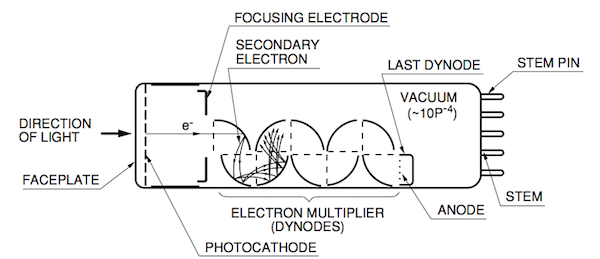Photon counting, addendum
Let me add some clarification to the hybrid PMT post.
The actual signal that comes off of a PMT in response to a photon is a pulse of current. The amplitude of this pulse can vary wildly, and the variation is referred to as multiplicative noise. For that reason, photon counting schemes typically use a simple threshold-crossing to trigger counts, which often mostly solves multiplicative noise. You’re smart, so I know you’re already wondering what happens when two pulses occur very close to each other in time. This is called “pile up” and it’s a problem. There are different ways to deal with it, but since single pulses can be so variable, it’s difficult to deal with it effectively. I also want to note that even for dim images, events WILL come close enough together SOMETIMES. And for bright images, it happens quite often, and this precludes quantitative imaging.
Hybrid PMTs address this by having a huge gain at the first stage which essentially decreases the noise (by a factor of sqrt(n)) so that the photon-evoked pulses are less variable. They can also be designed to make the pulses briefer. Brief pulses = less pileup, and more regular pulses means that more sophisticated schemes can be used to accurately count photons. All in all, this results in more quantitative imaging. Of course, this is most relevant for bright images.
Alright, back to watching Plaxico Burress not catching passes.

Probably not having thought this through all the way, but my impression after skimming the B&H tech note is that hybrid PMTs have the following advantages: much less amplitude jitter, no after pulsing, less background noise/pulsing in general (they show fluorescence decay curves with nearly zero offset — something you will never get with standard PMTs).
Given those advantages, I wonder, if it’s worth going through the added tinkering of adding photon counting to the system, as you already would have at least half of the advantages already by just using a hybrid PMT …